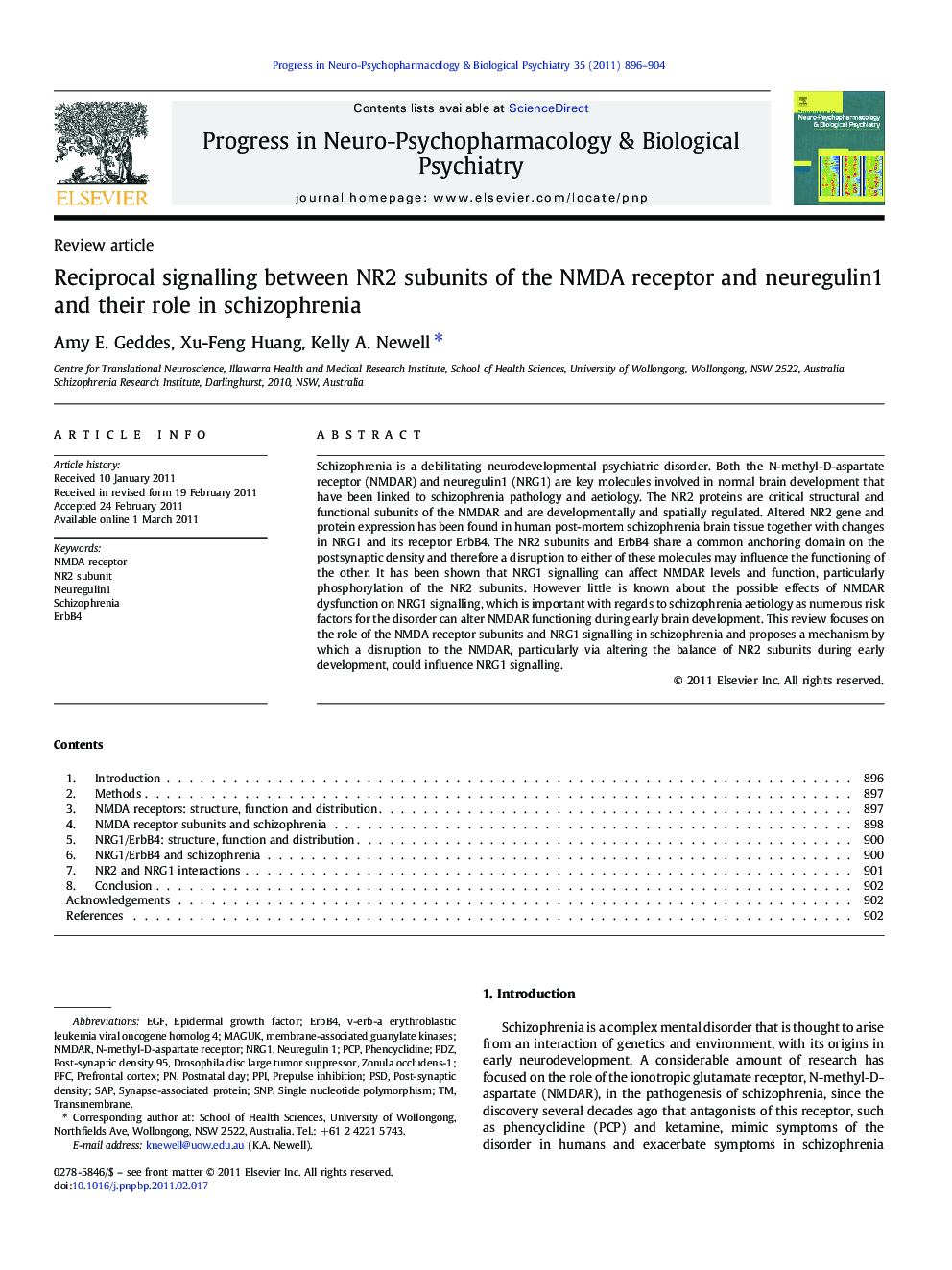| Article ID | Journal | Published Year | Pages | File Type |
|---|---|---|---|---|
| 2565222 | Progress in Neuro-Psychopharmacology and Biological Psychiatry | 2011 | 9 Pages |
Schizophrenia is a debilitating neurodevelopmental psychiatric disorder. Both the N-methyl-D-aspartate receptor (NMDAR) and neuregulin1 (NRG1) are key molecules involved in normal brain development that have been linked to schizophrenia pathology and aetiology. The NR2 proteins are critical structural and functional subunits of the NMDAR and are developmentally and spatially regulated. Altered NR2 gene and protein expression has been found in human post-mortem schizophrenia brain tissue together with changes in NRG1 and its receptor ErbB4. The NR2 subunits and ErbB4 share a common anchoring domain on the postsynaptic density and therefore a disruption to either of these molecules may influence the functioning of the other. It has been shown that NRG1 signalling can affect NMDAR levels and function, particularly phosphorylation of the NR2 subunits. However little is known about the possible effects of NMDAR dysfunction on NRG1 signalling, which is important with regards to schizophrenia aetiology as numerous risk factors for the disorder can alter NMDAR functioning during early brain development. This review focuses on the role of the NMDA receptor subunits and NRG1 signalling in schizophrenia and proposes a mechanism by which a disruption to the NMDAR, particularly via altering the balance of NR2 subunits during early development, could influence NRG1 signalling.
Research Highlights► The NMDAR and NRG1 are key molecules associated with schizophrenia. ► The NR2 proteins are critical structural and functional subunits of the NMDAR. ► The NR2 subunits and ErbB4, share a common anchoring domain on the postsynaptic density. ► Altering the balance of NR2 subunits during brain could influence NRG1 signalling. ► This could have possible implications for the development of schizophrenia.
